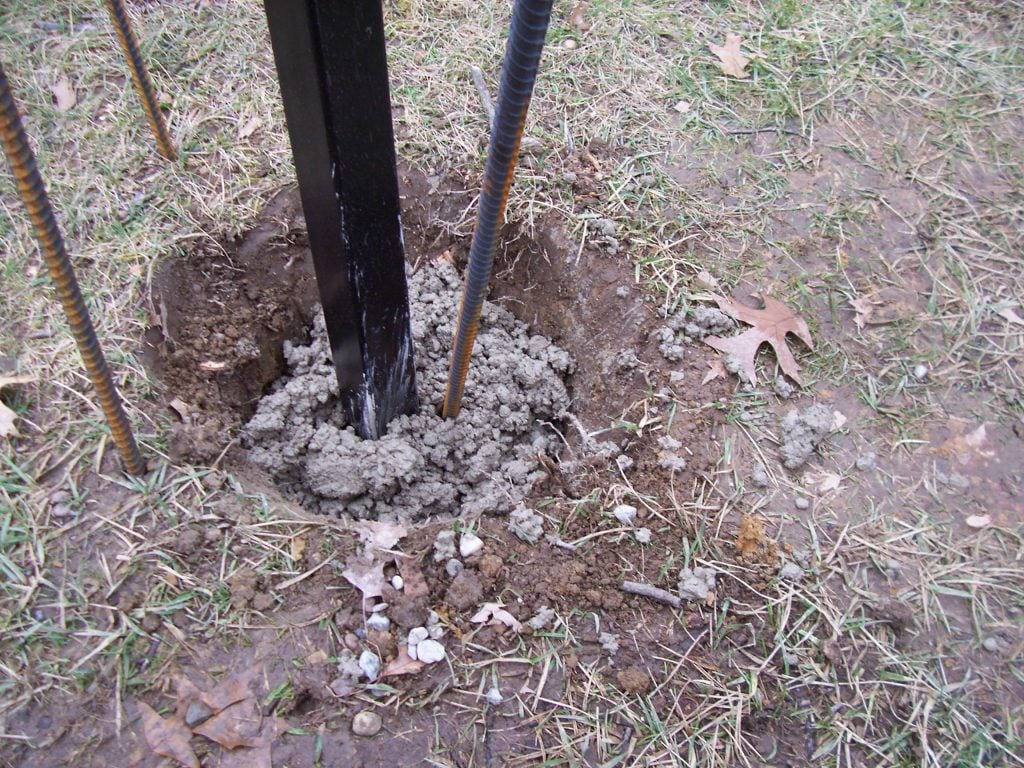
When installing a gate or fence, ensuring that your post holes are the correct diameter is crucial for stability and longevity. In this guide, we’ll cover the general post-hole concrete calculator for the width of your post-holes, why this calculation is important, and when you may need to go wider than the standard recommendation.
Check out the video here!:
The Basic Fence Post-Depth Calculator
The general rule of thumb for determining the diameter of a hole is simple:
Multiply the width of your fence post by three.
For example:
- A 2-inch square post diameter requires a 6-inch wide post hole (2 inches x 3 = 6 inches).
- A 4-inch square post diameter requires a 12-inch wide post hole (4 inches x 3 = 12 inches).
This calculation provides the minimum recommended post hole width, ensuring that the post is centered in the concrete and has adequate support.
Why Is This Calculation Important?
The primary purpose of this fence post-depth calculator is to provide enough surrounding concrete to:
- Prevent cracking and breaking of the concrete base.
- Ensure stability against impact or movement.
- Secure the fence post in place to withstand external forces like wind, weight, and pressure.
When You Should Dig a Wider Fence Post Hole
While the three-times-multiplier rule gives you a good starting point, there are several situations where a wider hole is beneficial:
Gate Posts Require More Support
Unlike stationary fence posts, gate posts experience additional force due to:
- The swinging motion of the gate.
- People leaning on or pulling the gate.
- The weight of the gate exerts pressure on the hinge post.
For gates wider than 5 feet, it’s advisable to dig a larger fence post hole diameter than the standard calculation suggests.
Example:
For a 12-foot wide driveway gate on a 6-inch fence post, the standard calculation would recommend an 18-inch diameter hole. However, a 20-24 inch diameter hole is a safer choice to provide additional support.
Wide or Heavy Gates with an Arch Design
Arched driveway gates add extra weight toward the ends of the gate leaf, putting more strain on the hinge post. To ensure stability, consider how much concrete is needed to reinforce a wider hole and provide additional support.
Obstacles in the Ground (Rocks, Tree Roots, etc.)
If you encounter large rocks or tree roots that prevent digging to the full hole depth required, you can compensate by making the hole wider to maintain stability.
Example:
If you planned a 6-inch wide, 34-inch deep hole for a 2-inch fence post but hit a rock at 18 inches, you could adjust by digging a 12-inch wide hole at the shallower depth. This helps maintain the fence post’s stability despite the reduced ideal depth.
Maximizing Durability with the Right Fence Post Hole Width
Calculating the correct fence post-hole diameter is essential for a sturdy, long-lasting fence or gate. While the 3x fence post width rule provides a reliable minimum, factors like gate weight, post size, and underground obstructions may require you to go wider for added security.
For specific scenarios, consulting an expert is always a good idea. Need help? Contact Iron Fence Shop for personalized advice!
 Free Shipping over $5,000
Free Shipping over $5,000
 15 Years in Business
15 Years in Business
 18mo No Interest Financing
18mo No Interest Financing


